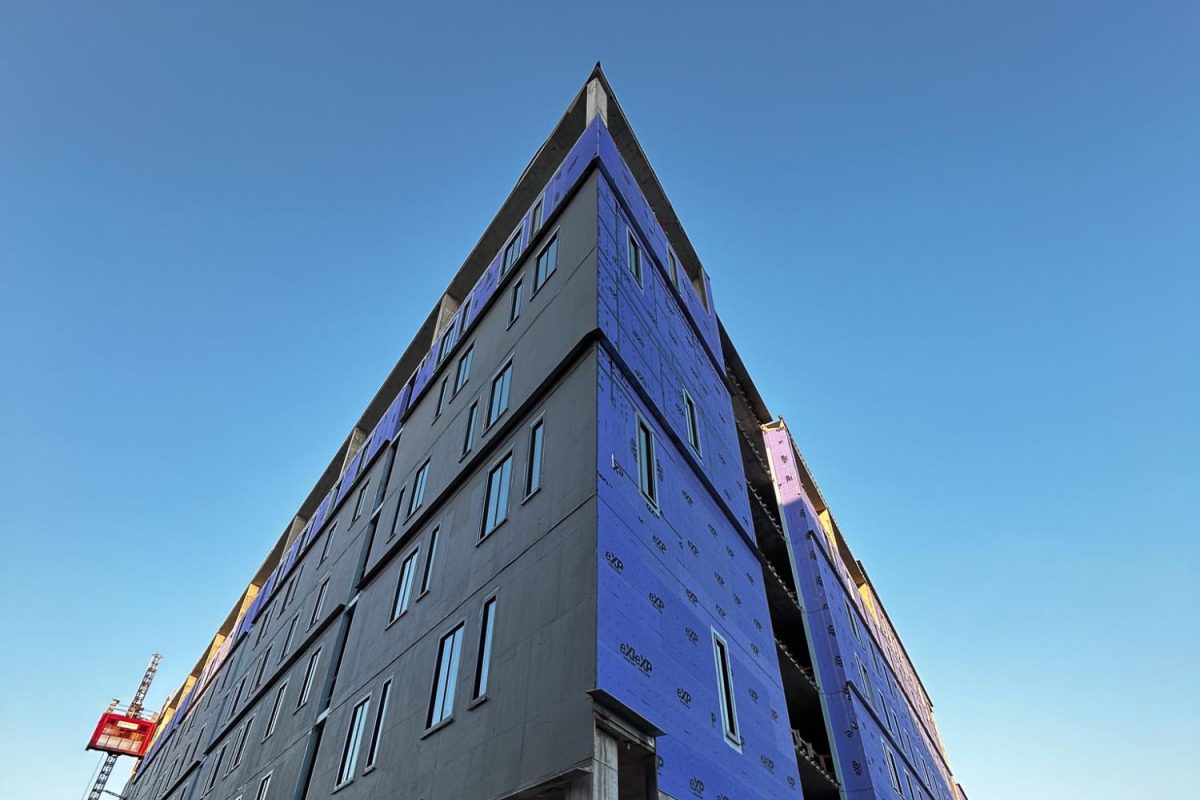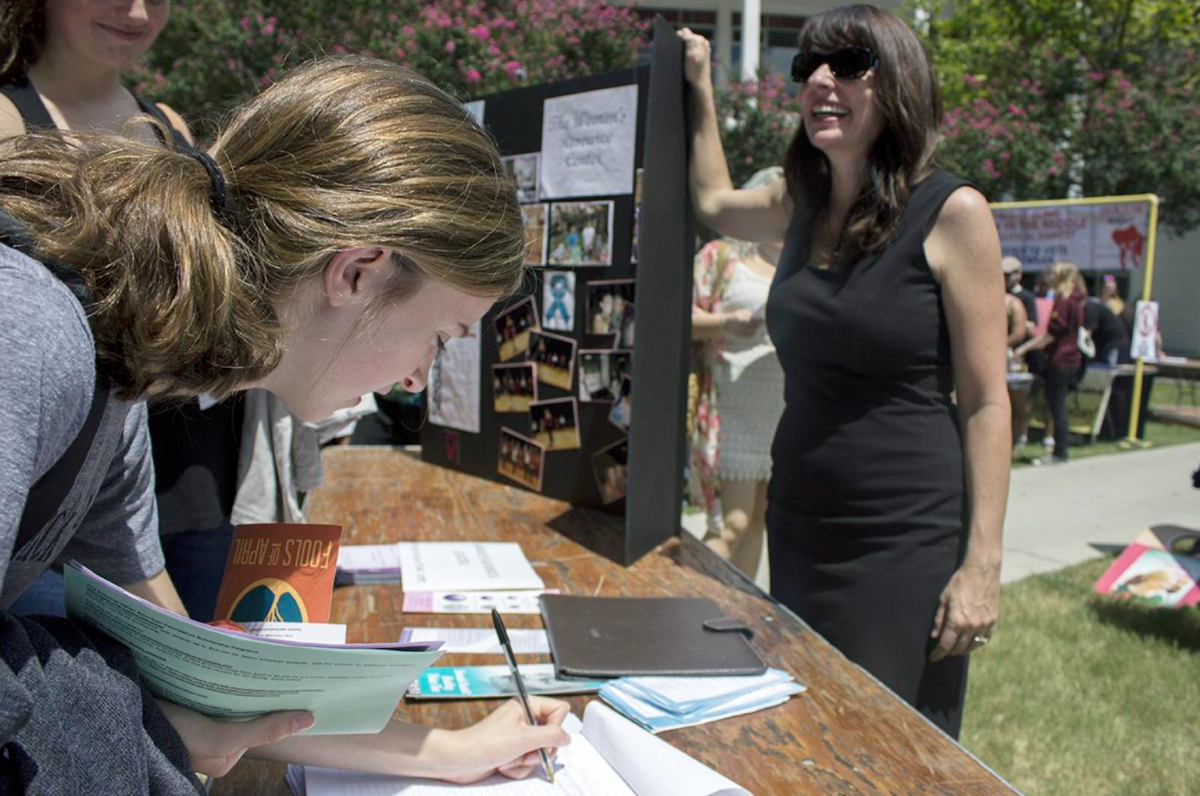For the last year, the back corner of Loyola’s campus has been a source of dust, noise, and road blockages. By the end of summer 2025, however, the construction site will become Loyola’s new apartment-style dorm building: Mercy Hall.
Chief operating officer Carol Markowitz said more on-campus housing was needed, as students were being forced to move off campus.
“We simply do not currently have adequate on-campus housing capacity to meet the demand of our undergraduate population, forcing most juniors and seniors to move off campus,” Markowitz said, “The primary driver of this project boils down to supply and demand.”
Before its demolition and reconstruction, Mercy Hall housed various university departments, including counseling and criminal justice. In July of 2023, it was demolished to account for the growing desire for an apartment style, on-campus housing, according to Markowitz.
The new residence hall will be seven stories and around 200,000 square feet to accommodate about 600 students in 140 apartments of various sizes: 2-person, 4-person, and 6-person. Each apartment will be equipped with the furniture displayed in the Danna Center last spring.
Additionally, Loyola has approximately 600 law and graduate students and over 2,000 undergraduates who live off campus. Added on-campus housing will provide students with both convenience and safety, Markowitz said.
“On-campus living provides extra security for students and peace of mind for their parents,” Markowitz said.
Regarding construction, Loyola has ensured that Mercy Hall will be weather and hurricane safe, according to Markowitz. The building has a concrete frame with post-tension slabs for additional reinforcements, and the windows are hurricane-rated for impact resistance. The roof will be modified bitumen, a sturdy asphalt covering layer, ideal for the hot and rainy New Orleans weather.
Mercy Hall is equipped with an emergency generator suited to power critical systems as well as the large ground floor community space, which will serve as a respite for students in the event of a short-term power outage, according to Markowitz.
“These steps have all been taken to ‘harden’ this building against potential damage from a hurricane,” Markowitz said.
According to Markowitz, Strategic Plan 2020 and the university’s Institutional Master Plan have taken measures for Mercy Hall to be sustainable. The building has not been certified by Leadership in Energy and Environmental Design standards which are set by the U.S. Green Building council. However, those involved with building planning have been trained on sustainability and design with consciousness to the environment.
An electrical metering system will provide real time electrical consumption so residents will be aware of how their activities and practices impact energy and carbon emissions to the atmosphere.
Additionally, the new residence hall will have a rooftop solar panel system, which will cover about 30% of the building’s electrical consumption.
“The building is also one of the first in this region to be built under the recently adopted International Energy Efficiency Code,” Markowitz said.
This code entails requirements such as continuous wall and roof insulation, tighter sealing, more efficient air condition systems as well as occupancy sensors and timers on lighting systems.
The building is expected to have an Energy Use Intensity score of 37, using about half the energy of a similar baseline building. The new residential building includes over 50% recycled content, with the vast majority of the materials produced within a 500-mile radius.
Furthermore, Mercy Hall and the surrounding area has been designed to alleviate New Orleans frequent events of flooding related to heavy rain and storms. The site will capture nearly 5,000 cubic feet of stormwater through rain gardens and landscapes designed to absorb water around the building’s edges and within the central courtyard.
The exterior of the building will include “substantial amounts” of glass curtain wall, or lightweight glass panels, according to Markowitz. A ceramic paint, known as bird frit, will be painted onto the glass to prevent impact-related bird deaths – the campus crows will stay safe.
Mercy Hall will include a decorative terrazzo crest salvaged from the original building’s floor to memorialize the former use. Mercy Hall was initially built in 1960 as Mercy Academy high school and was sold to the university in 1972 by the Sisters of Mercy.
“The Courtyard at the center of the building is designed to feel like a traditional New Orleans French Quarter experience,” Markowitz said.
Mercy Hall has been designed to be a gateway for the northeast side of the school and a more attractive entrance from Freret Street. The surrounding sidewalks are being replaced, and the perimeter of the site and the interior courtyard will house native plants and greenery.
“The courtyard and portals will create a transition space between busy Freret Street and the calmer on-campus quads beyond, creating a better edge for campus,” Markowitz said.
Adjacent to the large, central courtyard, a community room will be built for campus gatherings and events. Mercy will also include study lounges on each floor and a large ground floor laundry room.
According to Markowitz, Mercy Hall will maximize interior daylight and views in apartments, promoting natural light inside the building.
“The expectation is that once complete, students will love to walk up to the building and call it their university home,” Markowitz said.






















